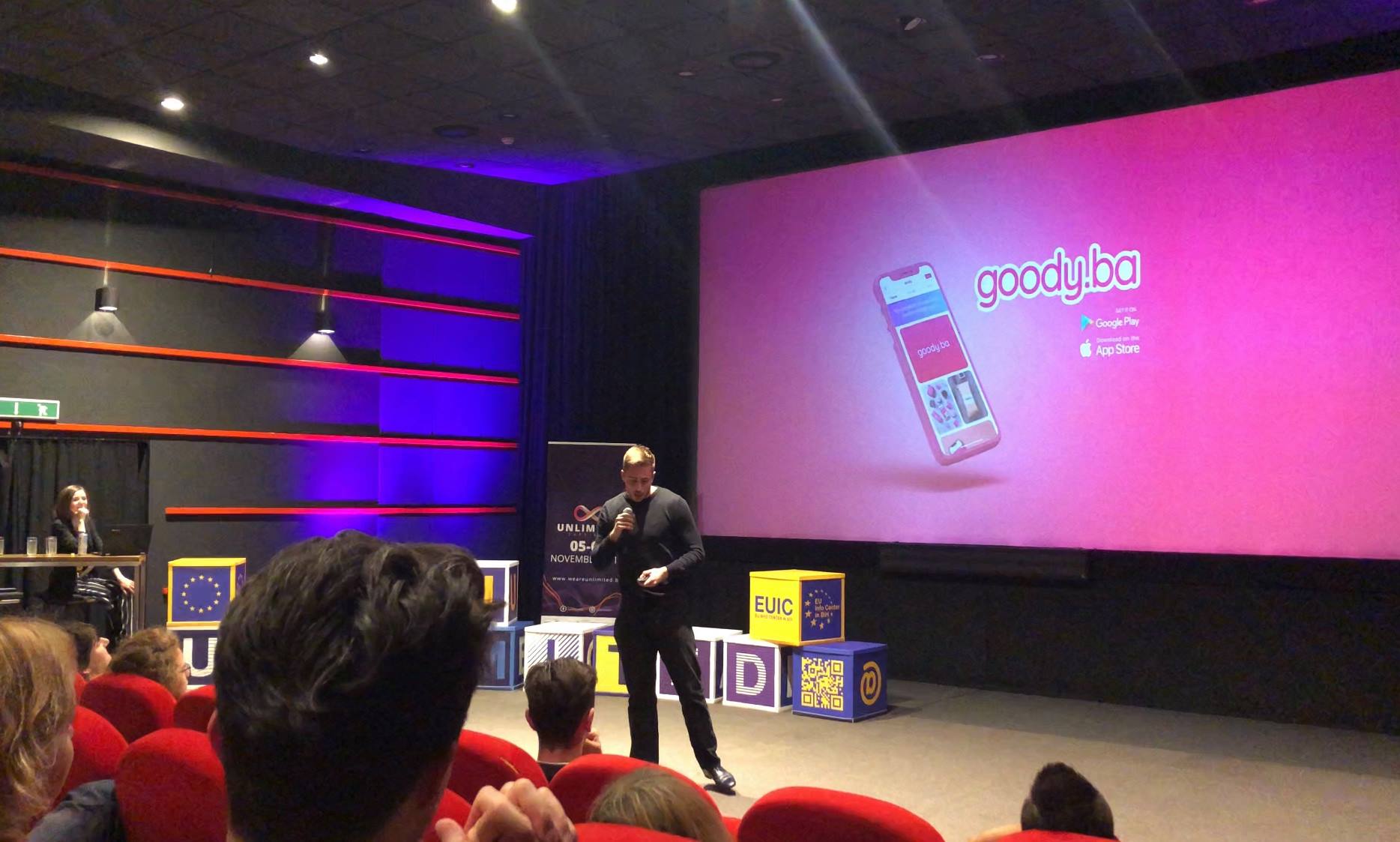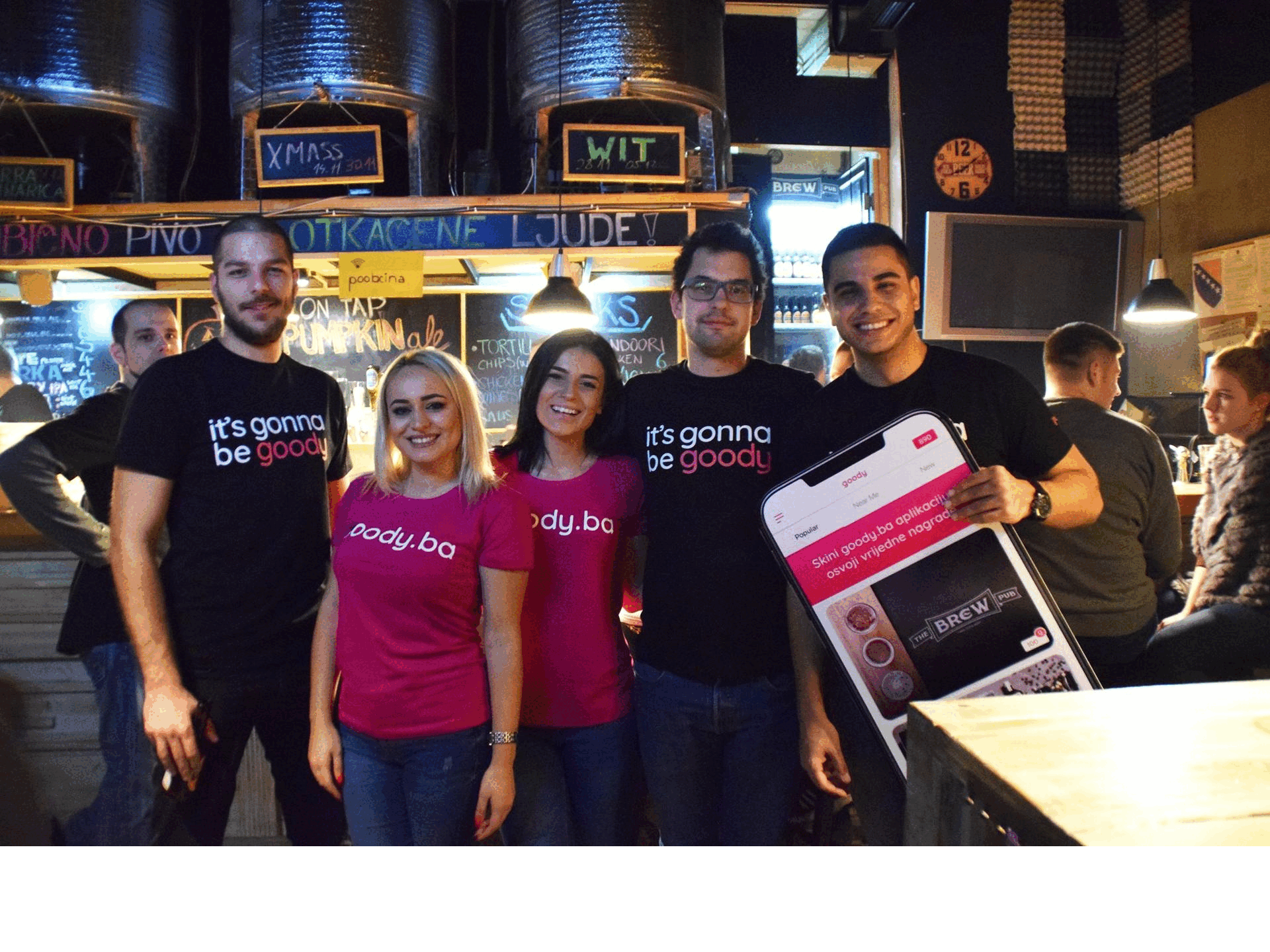The setup
Goody.ba started in a classroom—but it didn’t stay there for long.
During my final year of university, I pitched a loyalty app idea for my iOS development course. Instead of building a standard project, I wanted to make something real. Something useful. My professor got curious. At the time, he was also co-founder of a local software company, and instead of just giving me a grade, he offered something better access to his team.
Within days, I was working alongside one iOS engineer, one Android dev, one backend developer, a PM, and a sales rep. We gave ourselves three months. No investors. No budget. Just build it, launch it, and see what happens.
What we built
Goody was a gamified loyalty app designed for local businesses.
Users scanned would get daily digital coins and scratch digital scratch cards
Coins = prizes — everything from free coffee to actual weekend getaways
Businesses got foot traffic, repeat visits, and a simple dashboard to manage it all
It was the kind of thing you’d see in more mature markets, but no one had built it for the Balkans. And definitely not this playful.

The secret weapon: chocolate
Back then, I didn’t even know what “user research” meant. But I did know how to get people to try something.
At the time, I was a teaching assistant at the university. So I started handing out snacks and chocolates to my students in exchange for app feedback. They’d use the app, scratch, win some snacks, and unknowingly help us test usability, onboarding, and reward logic. It was scrappy, fast, and honestly—fun.
Those sessions taught me something I still believe today: user feedback saves you more money than anything else.

Traction
Within a year, Goody.ba grew to:
60,000 Monthly Active Users
100+ partners, including Swarovski, Panasonic, and Four Seasons
All while being fully bootstrapped
Local businesses loved the visibility. Users came back daily. And our team shipped weekly based on what we were hearing on the ground.
Why we didn’t scale
No angel investors: Bosnia had (and still has) a non-existent investment ecosystem
No infrastructure for scale: The country’s complex business regulations made it hard to raise even externally
Tight margins: Our monetization worked for early growth, but wasn’t enough to fund scale
COVID: The final blow. Foot traffic dried up, and with it, our growth model
Eventually, I sold Goody to a Swiss agency looking to expand into the region.
What I learned
Building Goody was my crash course in startups. I didn’t just design screens, I had to do everything. And that taught me the fundamentals of:
Product management: Prioritizing fast, shipping early, validating often
Sales & pitching: Convincing business owners who’d never heard of “digital loyalty”
Presentation: Storytelling in a way that got people (and brands) to say yes
Hiring & leadership: Keeping the team motivated through uncertainty and tight budgets
Optimism under pressure: No matter how hard it got, I learned to keep the energy up for everyone else
Most importantly, I learned the value of resilience—how to stay scrappy, optimistic, and focused even when nothing around you makes it easy.
Where it led me
After Goody, I pursued a Master’s in Computer Science and wrote my thesis on gamification in loyalty systems, pulling directly from what we built. That time helped me deepen the theory behind what I’d already lived through.
Today, that same mindset guides how I work as a product designer—prioritizing clarity, feedback, and real-world outcomes over flashy features.